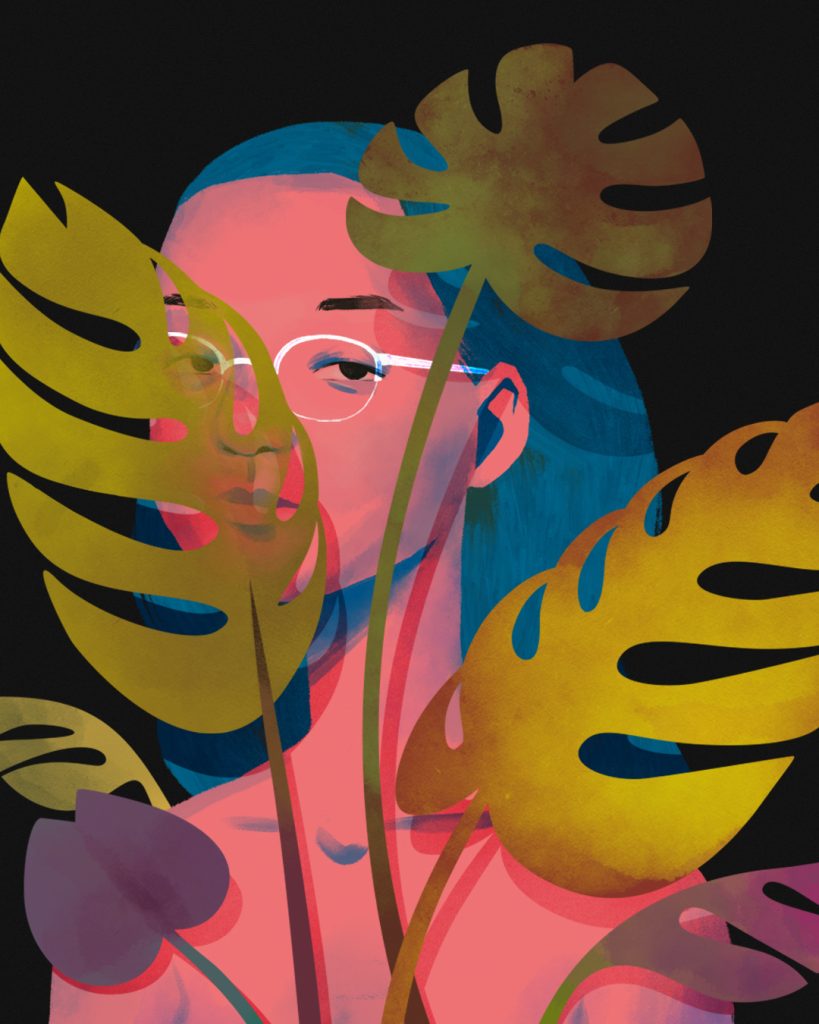
Every issue, GRAZIA Singapore highlights a Game Changer who inspires, educates, and celebrates individuality, beauty and style. This month, sustainability advocate Woo Qiyun (@theweirdandwild) muses on what fashion must really do to become more sustainable.
Recycled cashmere, mushroom leather, organic cotton, deadstock fabric, pineapple silk—when we think about sustainable fashion, it is not uncommon to associate it with responsibly‑sourced alternative materials such as these. Materials are often front and centre in conversations on sustainability in fashion, from brands showcasing their latest lines with frontier‑pushing materials on the runway (think Patrick McDowell’s innovative leather drop at London Fashion Week this February), in capsule collections (such as Canada Goose’s HUMANATURE line) and in innovating their own (enter Nike Forward).
But sustainable fashion is not just about the kinds of materials that we’re using, but really about how we’re producing them. The fashion industry is facing strong pressures to embrace sustainability, especially as consumers, regulators and investors are becoming more aware and critical of what brands are doing.
Sustainability is a big change for the fashion industry, which has for years benefited from and struggled with production processes that are wasteful, extractive and destructive to both people and the planet. According to a 2018 study by McKinsey & Company, 70 per cent of the fashion industry’s greenhouse gas emissions come from energy‑intensive raw material production, preparation and processing, with the remaining 30 per cent attributed to downstream activities such as transport, packaging, retail operations, usage and end‑of‑use.
Despite growing awareness, fashion is far from making the reduction in carbon emissions needed. It’s clear that the industry is still not doing enough. But what does “enough” look like? There’s no one thing that makes a fashion brand “sustainable”. Sustainable fashion is about working towards a system where the things we put on our bodies are produced more consciously; where we consider how we, consumers of fashion, experience the entire life cycle of a piece of clothing—from its production to end of life.
Material innovations are important, of course, to address the destructive overproduction of raw materials. But what’s harder to shout about is those who are trying to alter our relationship with clothing. Sustainable fashion is really about changing our relationship with fashion. Achieving sustainability in fashion requires us to rethink the way we experience clothes and one way we can do that is through embracing circular fashion.
Circular fashion, as coined by Anna Brismar, is about apparel that is designed, sourced, produced and provided with the intention to be used and circulated responsibly and effectively in society for as long as possible in their most valuable form, hereafter returned safely to the biosphere when no longer of human use. It is a pivot away from our current linear economy where we take resources, make things and then throw them away. In short, our relationship with clothes is toxic and a circular economy is our counsellor.
Putting this into action looks like using quality materials and designing timeless pieces that last across trends; like decarbonising manufacturing facilities by installing renewable energy; like choosing less resource‑intensive materials that can be properly recycled at the end of their lives; like implementing after‑sales processes that allow consumers to extend the life of garments through repairing them or turning used clothes into new materials.
Circular fashion also requires us to reckon with our fundamental relationship with clothes; to stop seeing them as disposable pieces at the end of trend cycles and to really see them as timeless, cherished pieces. Circular fashion forces us to confront a new way to consume and sell fashion, which is a tall order for an industry that thrives off trends and relies on sell‑through.
Therefore, our path towards a better fashion industry will need agenda setters such as Gabriela Hearst, who famously quipped at Paris Fashion Week in March 2023: “I never think about trends.” We need people who refuse to play by fashion’s current rules, one of which is avoid outfit repeating—let Tony Leung repeat his blue Adidas tracksuit and let us celebrate the 85 times that Kate Middleton has repeated her favourite outfits.
We need brands willing to set their own rules, such as Gucci, which not only slashed its shows from five to two a year, but sought to challenge the very idea of seasonal collections; as well as those that create new ones, such as Patagonia, which provides after‑sales mending services and even a second‑hand platform for consumers to recirculate their used clothes. We need people who are willing to change the way we view clothes—beyond how they make us feel to how they’re made and where they end up.
The future of fashion is circular, and we need people who aren’t afraid to ruffle a few feathers along the way.
